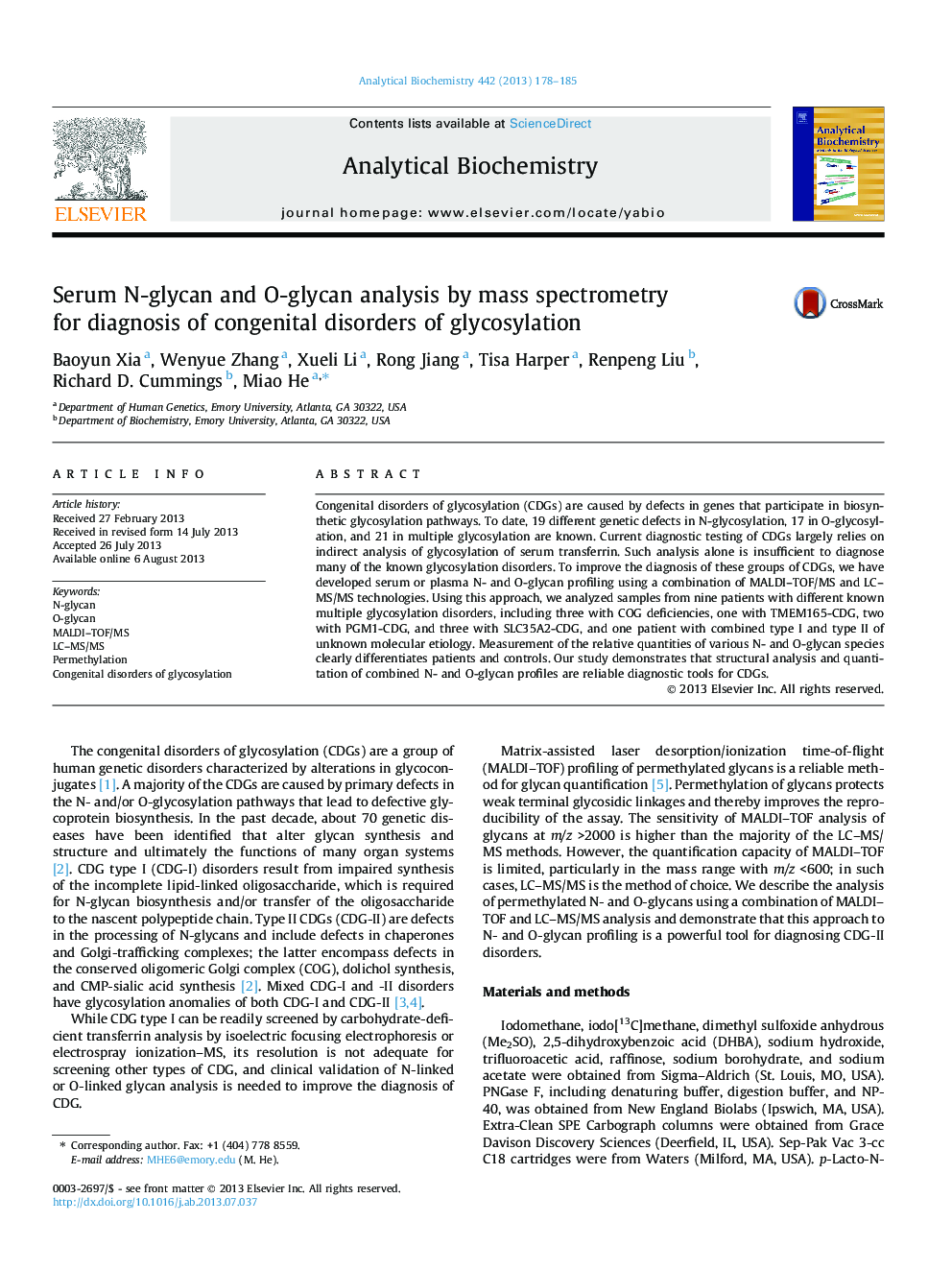| Article ID | Journal | Published Year | Pages | File Type |
|---|---|---|---|---|
| 1173672 | Analytical Biochemistry | 2013 | 8 Pages |
Congenital disorders of glycosylation (CDGs) are caused by defects in genes that participate in biosynthetic glycosylation pathways. To date, 19 different genetic defects in N-glycosylation, 17 in O-glycosylation, and 21 in multiple glycosylation are known. Current diagnostic testing of CDGs largely relies on indirect analysis of glycosylation of serum transferrin. Such analysis alone is insufficient to diagnose many of the known glycosylation disorders. To improve the diagnosis of these groups of CDGs, we have developed serum or plasma N- and O-glycan profiling using a combination of MALDI–TOF/MS and LC–MS/MS technologies. Using this approach, we analyzed samples from nine patients with different known multiple glycosylation disorders, including three with COG deficiencies, one with TMEM165-CDG, two with PGM1-CDG, and three with SLC35A2-CDG, and one patient with combined type I and type II of unknown molecular etiology. Measurement of the relative quantities of various N- and O-glycan species clearly differentiates patients and controls. Our study demonstrates that structural analysis and quantitation of combined N- and O-glycan profiles are reliable diagnostic tools for CDGs.
